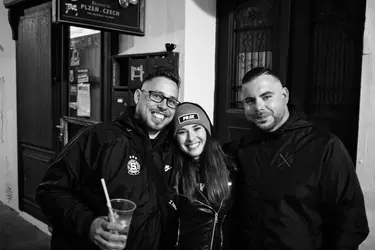ntz
No longer a newbie, moving up!
- Joined
- Oct 29, 2020
- Messages
- 716
- Reaction score
- 387
- Location
- Central Bohemian, Czech Republic
- Can others edit my Photos
- Photos OK to edit
Hello,
I am struggling a bit to understand how am I supposed to use the FUJ's film simulation modes. As a lifetime Nikon shooter I never used a JPGs, just never. I shoot to RAWs + JPGs but I use a JPGs only for sorting and quick reviewing of what I have but in reality, beyond looking on JPGs I never worked with them. I am interested the most into the B&W film-like modes but it seems to me that I am getting better results when I just process the Fuji RAF image as usual and convert that into B&W during the postprocess ... here is the example (see please an attached files).
So my questions are:
1) do you ever edit the SOOC JPGs with Fuji's film simulation modes, they tend to be usually flatter that their potential is but after editing, it's different image, isn't it ? and isn't it silly to edit JPGs like that ?
2) if so, what kind of edits are acceptable to preserve the simulation which is not just the matter of few sliders
3) also perhaps it's the issue with my software, but I find a FUJI's RAWs with shifted colours a lot of time, especially blue-ish or purple-ish, I don't have any special setting in the camera, all zeros (saturation, sharpening, whatever else), perhaps it's related to that I always shoot with some film-like mode enabled (in reality switching mostly 95% of time between ACROS-R and Classic Chrome), not sure how exactly it works, but the RAF previews appear to adopt the style, so for example in my operating system I just have a B&W preview for RAFs if ACROS-R was used, but once I click on them and open them for processing (I use RawTherapee mostly, Darktable doesn't work a good for them at all and I have same "issue" in LR as well and I simply prefer RT over the LR anyway), they open in colour and the initial curves are deducted I believe from bundled JPEG profile so initial look in RAW editor is often fancy (or just horrible / bad). So my last question is, do I have to use a standard profile with FUJI camera when I intend to work with RAWs ?
thanks and regards, ~dan
I am struggling a bit to understand how am I supposed to use the FUJ's film simulation modes. As a lifetime Nikon shooter I never used a JPGs, just never. I shoot to RAWs + JPGs but I use a JPGs only for sorting and quick reviewing of what I have but in reality, beyond looking on JPGs I never worked with them. I am interested the most into the B&W film-like modes but it seems to me that I am getting better results when I just process the Fuji RAF image as usual and convert that into B&W during the postprocess ... here is the example (see please an attached files).
So my questions are:
1) do you ever edit the SOOC JPGs with Fuji's film simulation modes, they tend to be usually flatter that their potential is but after editing, it's different image, isn't it ? and isn't it silly to edit JPGs like that ?
2) if so, what kind of edits are acceptable to preserve the simulation which is not just the matter of few sliders
3) also perhaps it's the issue with my software, but I find a FUJI's RAWs with shifted colours a lot of time, especially blue-ish or purple-ish, I don't have any special setting in the camera, all zeros (saturation, sharpening, whatever else), perhaps it's related to that I always shoot with some film-like mode enabled (in reality switching mostly 95% of time between ACROS-R and Classic Chrome), not sure how exactly it works, but the RAF previews appear to adopt the style, so for example in my operating system I just have a B&W preview for RAFs if ACROS-R was used, but once I click on them and open them for processing (I use RawTherapee mostly, Darktable doesn't work a good for them at all and I have same "issue" in LR as well and I simply prefer RT over the LR anyway), they open in colour and the initial curves are deducted I believe from bundled JPEG profile so initial look in RAW editor is often fancy (or just horrible / bad). So my last question is, do I have to use a standard profile with FUJI camera when I intend to work with RAWs ?
thanks and regards, ~dan
Attachments
Last edited:











